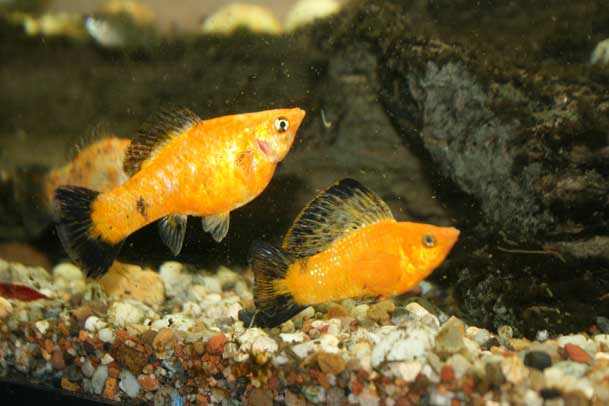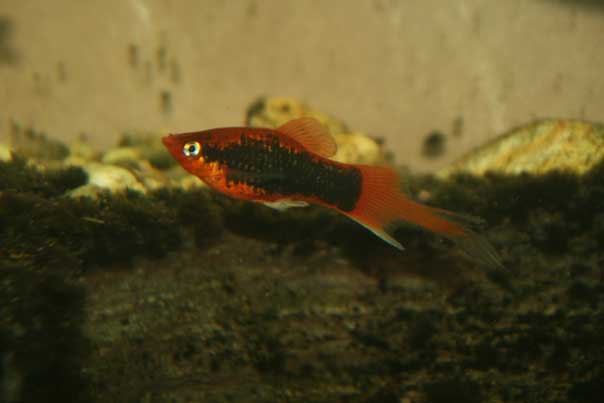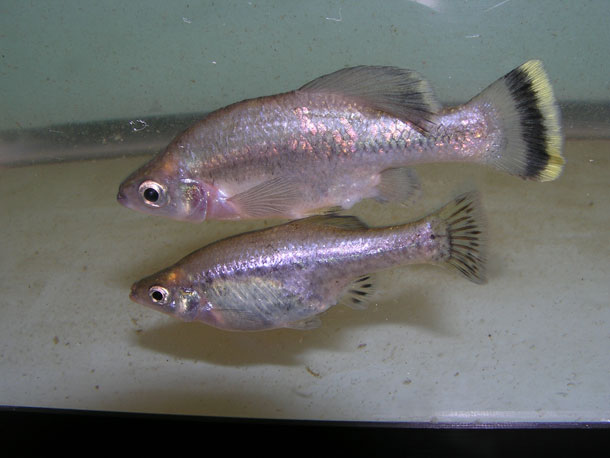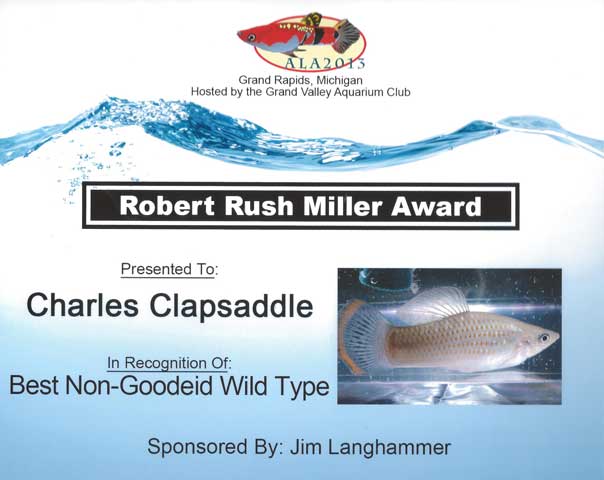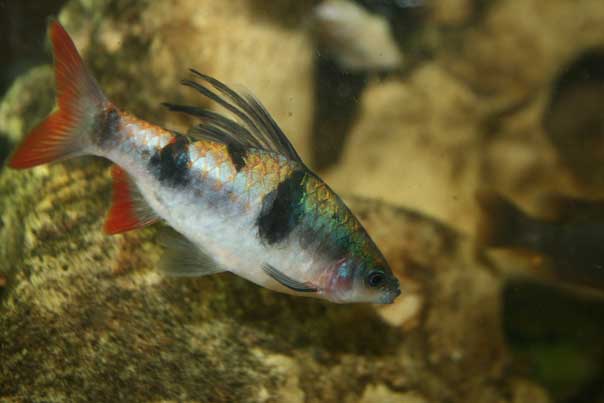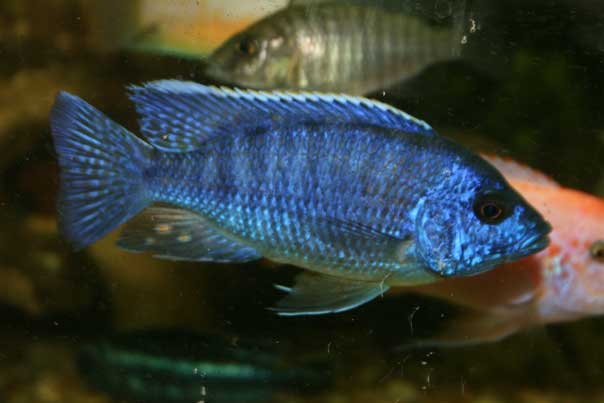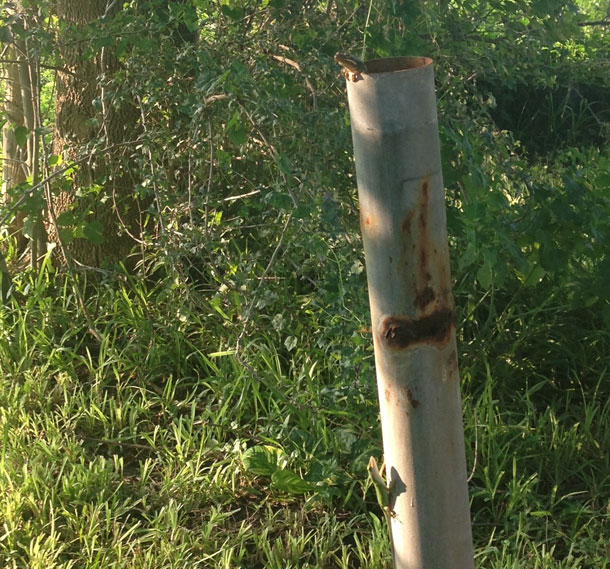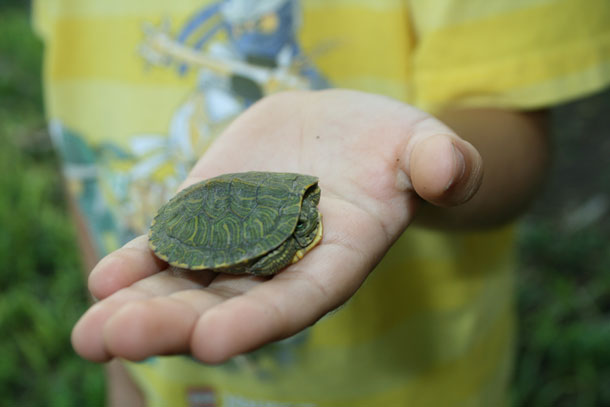The photo is of a young pair (about 3 months old) of our Goldwag Sailfin Mollies. This strain was one of the first we developed from a cross in 1998 of a male Gold Sailfin Molly we bought from a customer in Albuquerque, New Mexico with female Poecilia latipinna, San Antonio River which I had ... Read More
Blog
We have moved our content to YouTube! There is a wealth of information on in the blogs from 2013 - 2021 that we will maintain for your review. For more updated content, head over to our YouTube channel or Facebook page.
Red Tuxedo Plumetail Platies
We have been busy transferring the plumetail characteristic to all of our platies, both maculatus type and variatus type. For an idea of what a plumetail is, see the photo of a male. Then compare it to the photo of a male without a plumetail. Plumetail is a dominant gene. I originally raised ... Read More
Ameca splendens
This is one of the 40+ Goodeids, a family of livebearers hailing from Mexico’s central plateau. This fish is possibly extinct in the wild, although I’ve heard recent reports a wild population has been found. We’ve had A. splendens for probably a decade. For some reason our database doesn’t have ... Read More
The American Livebearer Association’s 2013 Show
Unfortunately, I was unable to attend the American Livebearer Association’s 2013 convention and show. But, I did ship fish to the show and auction. Rick Borstein picked them up in Chicago and delivered them to the show. We did fairly well. A male Poecilia mexicana, Campeche took best non-Goodeid ... Read More
Resurrection Palm
The title of this post is misleading since it’s really about a cycad not a palm, but most people don’t know the difference and cycads do look like palms. The particular cycad in question is probably in the genus Dioon, but we don’t know which species. I got this plant in 1975 having rescued it ... Read More
Puntius arulius
This is a large barb originally from India. We’ve had this barb for several years. My records don’t show exactly when or from whom we got them. Regardless of the source, they've proven to be reliable spawners. Also, we’ve found they are perfect for African cichlid tanks. They are not overly ... Read More
Blue Peacock
The photo is a six-month ago male Blue Peacock. This fish has an interesting history and pedigree. In 2003, after Hurricane Claudette crushed our first greenhouse in Goliad and destroyed much of our breeding stock of rainbowfishes and livebearers, we decided to expand into cichlids, especially ... Read More
Green Lizard Stalking Green Treefrog
The green lizard below the Green Treefrog apparently thinks the frog might be dinner. That can’t happen since the frog is much too large. The green lizard, which usually eats fly-sized meals and occasionally grasshopper sized ones, is a Green Anole (Anolis carolinensis) sometimes known as the ... Read More
Gulf Coast Toad, Bufo valliceps
This pictured toad has been living for the last few months in one of our greenhouses. When we walk by it on the wooden walkways we have between rows of vats, it simply hunkers down and waits for us to leave. This is a young toad, about 2.5 inches long; large adults are twice the size. We have ... Read More
Red Eared Slider Turtle, Trachemys scripta elegans
One day recently while going to our greenhouses, I found a young Red Eared Slider (Trachemys scripta elegans) walking across our gravel parking lot. The parking lot is not a hospitable environment for terrapins, which are mostly aquatic. This one had gotten disoriented after hatching and was headed ... Read More

